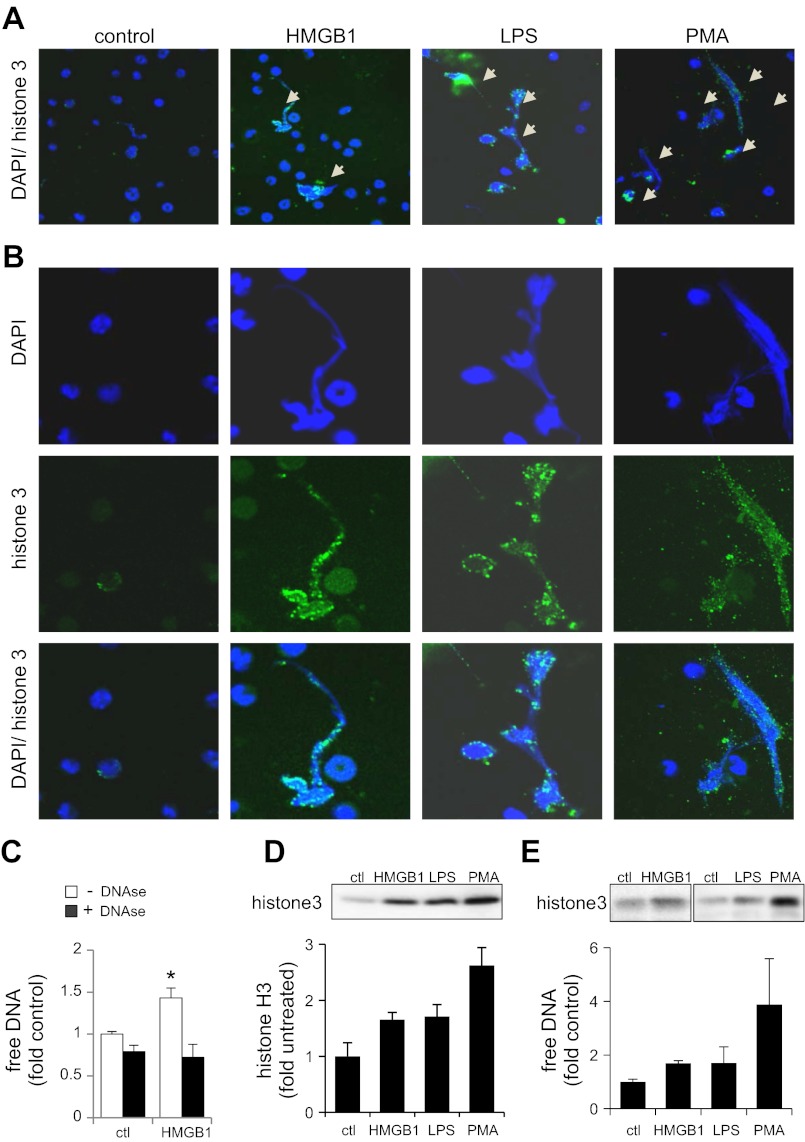Fig. 1.
High-mobility group box 1 (HMGB1) induces neutrophil extracellular trap (NET) formation. Bone marrow neutrophils were incubated in 0.5% serum containing HMGB1 (0 or 300 ng/ml), LPS (100 ng/ml), or phorbol myristate acetate (PMA) (10 nM) for 3 h. A: representative images show merged neutrophil DNA (blue) and histone H3 (green) staining. Arrows show NET formation. B: image magnifications obtained from A with indication of NETs and extracellular histone H3. C: neutrophils were treated with HMGB1 (0 or 300 ng/ml) for 3 h followed by inclusion of DNAse (0 or 200 U/ml) for 30 min. Free DNA was then measured using Sytox Green probe. Means ± SD were obtained from 3 independent experiments. D: neutrophils were incubated with HMGB1 (0 or 300 ng/ml), LPS (100 ng/ml), or PMA (10 ng/ml) for 3 h followed by inclusion of DNAse (0 or 200 U/ml) in the cultures for additional 30 min. The culture supernatant was then collected for analysis by Western blot with antibodies to histone H3. Representative Western blots and means ± SD of band optical densitometry obtained from 2 independent experiments are shown. E: human neutrophils were treated as indicated in C followed by measurement of free DNA and Western blot analysis with antihistone 3 antibody. Means ± SD obtained from 2 experiments are shown. *P < 0.05

